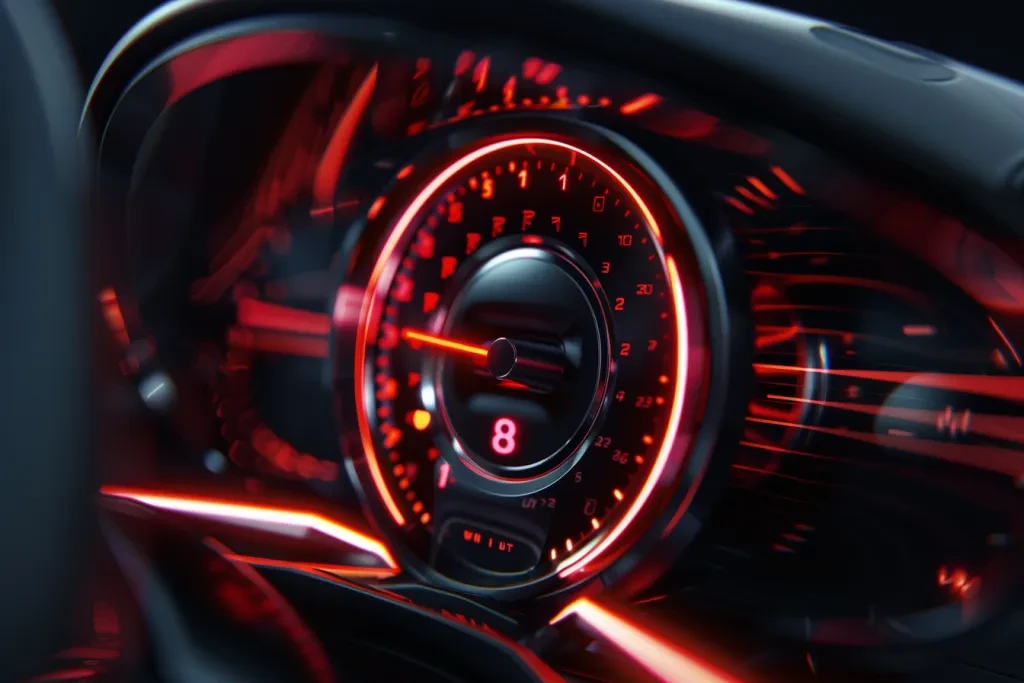
Why Does My Tachometer Jump Around Unexpectedly?
Share
If you are a tech professional or an enthusiast, you might have encountered the perplexing question, 'why does my tachometer jump around?' This seemingly minor issue can be both frustrating and indicative of larger potential problems in your vehicle's system. In this article, we will delve deep into the reasons behind tachometer fluctuations, explore their implications, and offer solutions.

The Function of a Tachometer
A tachometer is a vital instrument in any vehicle, measuring the engine's revolutions per minute (RPM). Understanding its purpose helps identify when something goes amiss. It is crucial for optimizing engine performance, fuel efficiency, and overall vehicle health. A sudden jump in tachometer readings can indicate a malfunctioning component or sensor.
Common Causes of Tachometer Fluctuation
When your tachometer behaves erratically, several factors might be at play. Here are the most common reasons:
1. Faulty Sensors
The most frequent cause for fluctuations is faulty sensors, especially the crankshaft position sensor and camshaft position sensor. These sensors provide vital data to the engine control module (ECM) about the engine's position, and any malfunction can lead to incorrect readings.
2. Poor Electrical Connections
An unstable electrical connection can also cause erratic tachometer behavior. Corroded wires or loose connections can lead to inconsistent data transmission from the engine to the tachometer.
3. Worn Out or Damaged Components
Over time, components that support the tachometer, such as the ignition coil or the wiring harness, may wear out or become damaged, resulting in abnormal readings.
4. Engine Load and Performance Issues
Another factor to consider is how much load the engine is under. An increase in load may cause the tachometer needle to jump around as the engine struggles to keep up. Additionally, engine performance issues like misfiring or stalling can contribute to tachometer fluctuations.
Identifying and Fixing the Problem
Once you've pinpointed the potential causes of tachometer fluctuations, it's vital to take corrective action:
1. Inspect Sensors
Start by inspecting the crankshaft and camshaft position sensors. Look for damage, wear, or debris obstructing the sensors. If needed, replace defective sensors.
2. Check Electrical Connections
Ensure that all wiring and connections are tight and free from corrosion. Cleaning or reconnecting the terminals can often resolve electrical issues.
3. Examine Engine Components
Conduct a thorough examination of the ignition coil and other components. Replace or repair any worn or damaged parts to restore proper function.
4. Assess Engine Load
Evaluate whether the engine is under excessive load and if performance issues are present. Address any underlying problems such as misfires, which may affect the tachometer readings.
Implications of Ignoring Fluctuations
Ignoring irregularities in your tachometer can lead to serious consequences. If the issue is caused by a malfunctioning sensor or component, it can lead to poor engine performance, lower fuel efficiency, or even damage to the engine over time. Don't let a relatively simple problem escalate; address it promptly.
Preventive Measures
To avoid tachometer fluctuations in the future, adhere to these preventive measures:
1. Regular Maintenance
Incorporate routine vehicle maintenance into your schedule. Regular inspections of the sensors and electrical systems can prevent problems before they arise.
2. Install Quality Components
Use high-quality parts when replacing any components related to your tachometer. Invest in reliable sensors and electrical connections to maximize performance.
3. Stay Informed
Keep abreast of any technical bulletins or recalls regarding your vehicle model. Awareness of common issues can facilitate proactive measures.
Real-Life Examples
Many vehicle owners have experienced sudden tachometer fluctuations. For instance, one owner noticed their tachometer jumping erratically after installing a new crankshaft position sensor. Upon closer inspection, it was discovered that the new sensor was incompatible with their engine, leading to fluctuating readings.
Conclusion
In conclusion, when addressing the question, 'why does my tachometer jump around?', understanding the causes and implications is paramount. A malfunctioning tachometer may be indicative of greater issues within your vehicle. Prompt action can save both time and potential costly repairs.

FAQ
1. What are common signs of a faulty tachometer?
Common signs include erratic needle movement, failure to display RPM, or showing incorrect readings.
2. How can I calibrate my tachometer?
Calibration can be performed by referring to the manufacturer's guidelines and using appropriate tools.
3. What is the relationship between a tachometer and engine performance?
A tachometer provides real-time feedback on the engine's RPM, helping to optimize performance and efficiency.
If you seek further understanding of how tachometers work, I suggest checking this insightful article from Science Direct for an in-depth exploration of this essential instrument.
